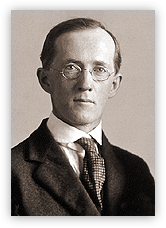 |
|
|
|
|
 ©MCC/CMC No. 46797 |
Frederick Waugh began his association with the Anthropological Division of the Geological Survey of Canada (now part of the Canadian Museum of Civilization) in 1911 as a contract ethnologist. Working in the areas of material culture, food, medicine, ceremonies, ethnobotany and linguistics, his first ethnographic assignment was a study of Iroquoian technology. F.W. Waugh's early photographic work was undertaken among the Iroquois of the Six Nations Reserve near the city of Brantford, Ontario. Having grown up close to Six Nations, Waugh already had an intimate understanding of the people he now observed as an anthropologist. His use of light and composition, and his accuracy in showing the relationship of subject to environment are clear evidence of his respect for the Iroquois people. From 1912 to 1920, Waugh continued to study the Iroquois, as well as the Mohawk of Kahnawake Reserve in Quebec. He also undertook fieldwork in 1916 which included the Ojibwa of Ontario's Long Lake, Nipigon, Manitoulin Island and Lone Lake (Lac Seul), and between 1921 and 1924 extended his studies to the Naskapi and Inuit of Labrador. By 1923, Waugh had been appointed an Associate Ethnologist with the Geological Survey — a position he held until his mysterious disappearance in 1924. Exhibition | Menu |